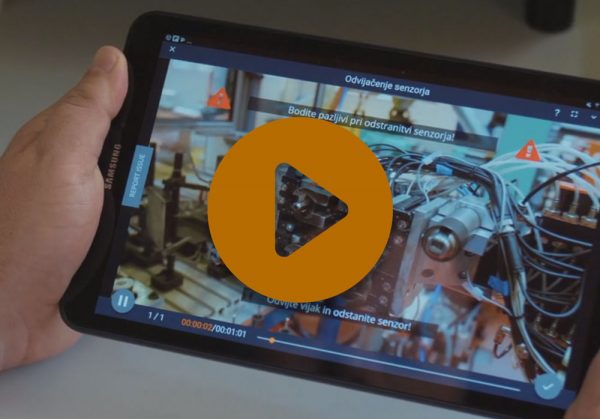Did you know that people only remember 10% of what they read? If you add images, then it doubles. Video and interaction make it even better. This is why knowledge transfer in work situations is most effective when it is based on images and videos.
Visual work instructions are easy to train with and easy to understand. By thinking visually, we can transform typical, hard-to-understand instructions into visually engaging, usable documents. The result? Lowered job costs due to greater productivity, higher quality, and less waste.
Why are visual work instructions better than text?
No matter if you are using augmented reality or standard videos, these are the eight reasons why a visual presentation of instructions is a way to go:
- it appeals to multiple senses: if pictures speak a thousand words, imagine what videos trigger
- It’s fast: human attention has become a scarce resource, videos make it easy for your audience to save time
- It’s easy to process and comprehend: just imagine the visual description of a ball versus its textual one
- ¨I don’t believe it until I see it¨: our psyche is built in such a way that if we see it – rather than read about it – we believe it; authenticity and credibility are demonstrated much easier.
- Showing is also a more convincing and gets people to take action.
- There are more, much more emotional triggers than in a picture, and in the end, emotions are the primary drivers of human behavior.
- Videos are easy to connect to: with such a rich tool, it is extremely easy to feel connected to the topic, idea, featured characters and so forth. And when the audience connects, he is engaged, he interacts, he joins – he acts.
- It’s evolution: visuals, visuals in motion especially attract our eyes, grab our attention, and keep it.
Studies show that reading blocks of text are one of the least efficient methods of transferring knowledge – especially when it involves co-workers with little education. With this in mind, it is less than ideal that most quality systems are based on written work instructions. Perhaps this is because most of us find it easier to write a document than to create an instructional video? As you will see here, modern video tools mean that it is now much easier to create visual work instructions. So there is really no good reason not to make those work instructions visual.
“Tell me, and I will forget.
Show me, and I will remember.
Involve me, and I will understand.
Step back, and I will act.”
– old Chinese saying

